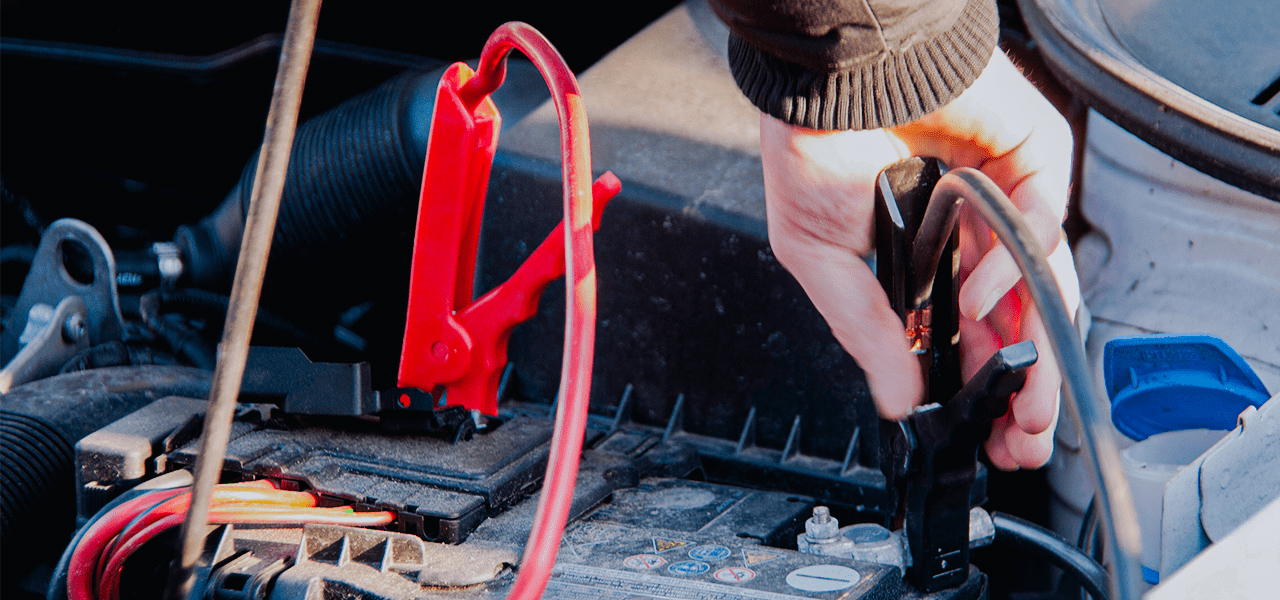A dead car battery can happen to anyone at the most inconvenient times. Whether you’re running late for work, stranded in a parking lot, or trying to help a fellow driver, knowing how to jump-start a car battery is an essential skill. Understanding this process can save you time, money, and stress while also ensuring you don’t accidentally damage your vehicle’s electrical system. However, improper jump-starting techniques can lead to costly repairs. Read more to understand the process of safely and efficiently jumping a car battery. We will also help you determine when it’s time to replace your battery instead of just recharging it.
What is a Car Battery and How Does it Work?
A car battery is the heart of your vehicle’s electrical system. It provides the necessary power to start the engine and keeps essential electronics, such as the lights and radio, operational. Car batteries work by converting chemical energy into electrical energy to supply power when needed. However, various factors can cause them to die, including:
- Cold weather: Extreme temperatures can reduce battery efficiency.
- Battery age: Most car batteries last 3-5 years before losing effectiveness.
- Leaving lights on: Forgetting headlights or interior lights can drain a battery overnight.
- Faulty alternator: If your alternator isn’t working properly, your battery won’t charge while driving.
Where is the Car Battery Located?
Car batteries are typically found in one of the following locations:
- Under the front hood: Most vehicles have the battery mounted in the engine bay.
- In the trunk: Some cars, particularly luxury models, place the battery in the trunk for weight distribution.
Before attempting to jump-start your car, always refer to your owner’s manual to locate the battery and learn how to access it safely.
What Tools Do You Need to Jump a Car Battery?
To safely jump-start a car, you’ll need:
- Jumper cables or a portable battery jump starter.
- Safety gloves and protective eyewear to prevent accidental sparks or acid exposure.
- A second vehicle (if using jumper cables) with a working battery.
- A battery charger (as an alternative method for recharging a dead battery).
Step-by-Step Guide: How to Jump a Car Battery Safely
Step 1: Position the Vehicles Properly (if using another car)
- Park both vehicles close enough so the jumper cables can reach, but ensure they do not touch.
- Turn off both engines and put the vehicles in neutral (or park if automatic) with parking brakes engaged.
Step 2: Connecting the Jumper Cables
- Open the hood and locate the battery terminals.
- Identify the positive (+) and negative (-) terminals.
- Attach the cables in this order:
- Red clamp to the positive terminal of the dead battery.
- Red clamp to the positive terminal of the working battery.
- Black clamp to the negative terminal of the working battery.
- Black clamp to an unpainted metal surface on the dead car (not the battery terminal) to reduce the risk of sparks.
Step 3: Starting the Working Car and Charging the Dead Battery
- Start the working car and let it run for a few minutes to send power to the dead battery.
- Look for signs that the dead battery is charging, such as brighter interior lights.
Step 4: Attempting to Start the Dead Car
- Try to start the car with the dead battery.
- If it doesn’t start immediately, wait a few more minutes before trying again.
- If the car still won’t start, check the cable connections or consider using a battery charger.
- If the car still wont start, you may need to get a new battery.
Step 5: Safely Removing the Jumper Cables
- Remove the cables in reverse order:
- Black clamp from the previously dead car.
- Black clamp from the working car.
- Red clamp from the working car.
- Red clamp from the previously dead car.
- Avoid letting the clamps touch each other during removal.
Step 6: Running the Engine and Preventing Future Battery Issues
- Let the newly started car run for at least 15-30 minutes to allow the alternator to recharge the battery.
- If the battery dies again shortly after, it may need replacement.
Alternative Methods: How to Jump a Car with a Battery Charger
A portable battery charger can be a great alternative if no second vehicle is available.
- Plug the charger into a power outlet and connect it to the battery terminals.
- Follow the manufacturer’s instructions for charging time.
- Once charged, attempt to start the car.
When to Replace vs. Recharge a Car Battery
Sometimes, a jump-start isn’t enough, and a replacement is necessary. Signs that your battery may be failing include:
- Slow cranking when starting the engine.
- Dim headlights or electrical malfunctions.
- Battery warning light on the dashboard.
- Using a multimeter, a reading below 12.4 volts when the car is off indicates a weak battery.
With most modern vehicles, once the battery is replaced, you have to tell the computer that it has been done so it can reset the “Progressive Rate Charging System.” This system will increase the charging rate of the battery due to age. When this system isn’t reset, it can “overcharge” the new battery.
Where Can I Charge a Car Battery?
- At home: Using a trickle charger or standard battery charger.
- At an auto repair shop: For a fast, professional charge and diagnostic check.
- Fast-charging vs. trickle charging: Fast-charging gets you back on the road quickly, while trickle charging is better for long-term maintenance.
Why Get Your Car Battery Replaced at Burt Brothers?
If you’re unsure how to fix the issue or simply want expert assistance, Burt Brothers Tire & Service is here to help. Our skilled ASE-certified technicians can quickly diagnose and repair your dead battery, getting you back on the road safely. Stop by your nearest Burt Brothers location for fast, reliable service you can trust!
Stay Prepared for Battery Emergencies
Don’t let a dead battery leave you stranded! Here are a few simple ways to stay ahead of unexpected battery trouble:
- Keep an eye on its voltage and know its age. Most car batteries last around 3–5 years.
- Always have a set of jumper cables or a portable jump starter in your car.
- Schedule a routine maintenance at Burt Brothers for peace of mind.
If your battery is giving you trouble, visit Burt Brothers for a battery test, professional charging, and reliable replacement services. Stay prepared, stay safe, and keep your car running smoothly!





